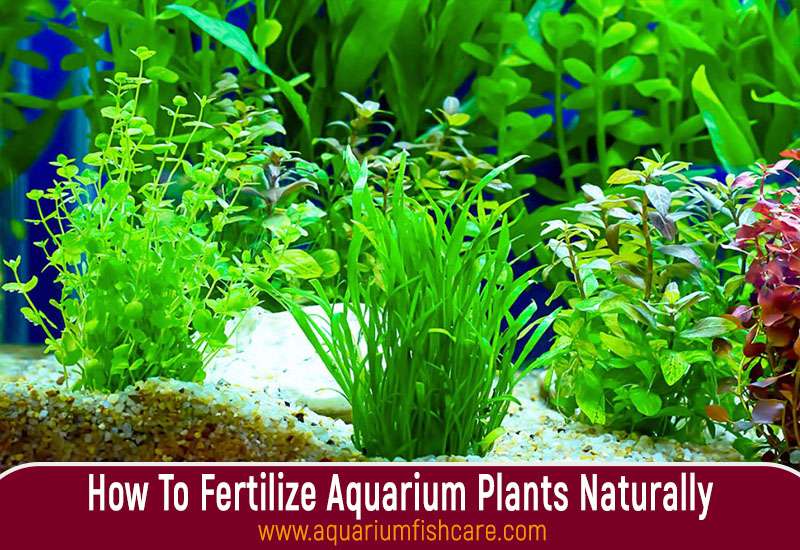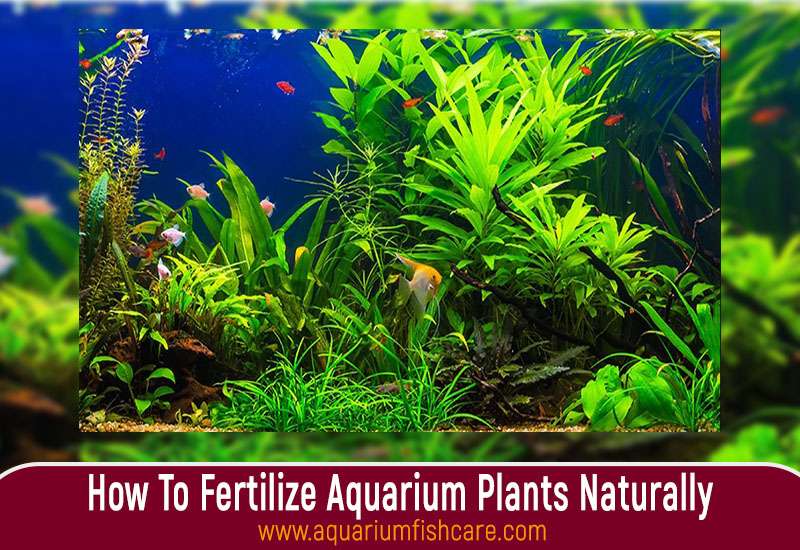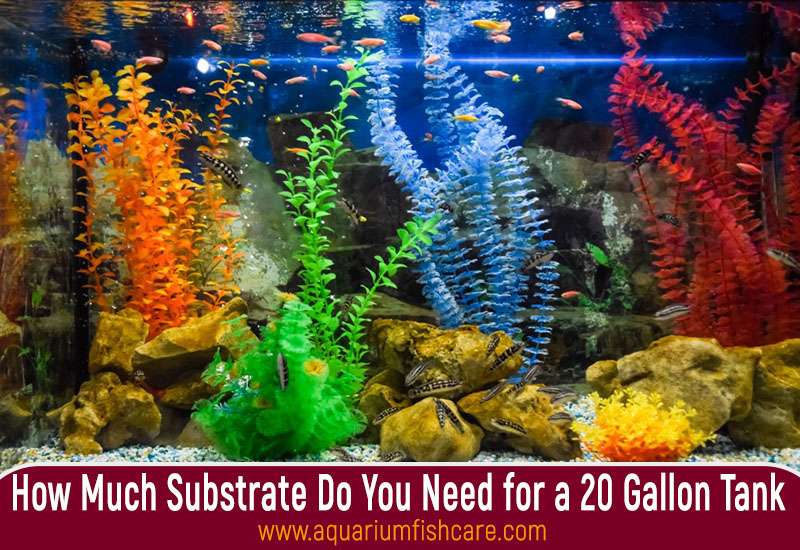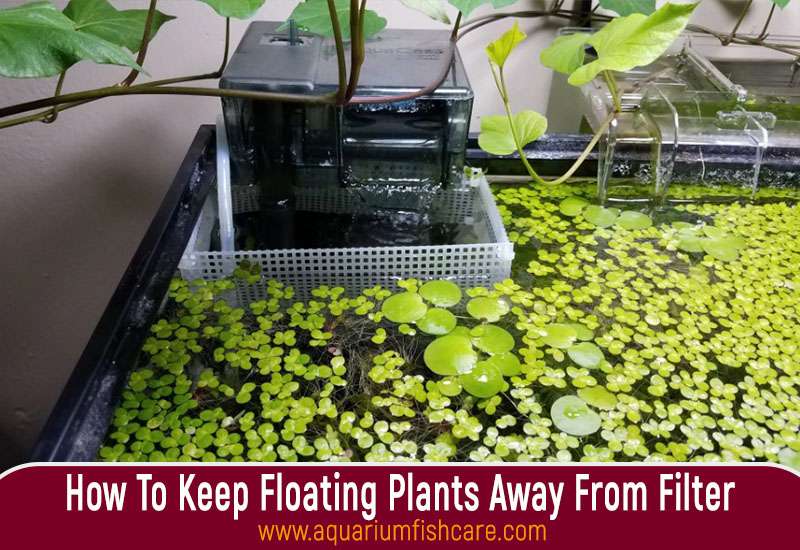How To Fertilize Aquarium Plants Naturally: To naturally fertilize aquarium plants, consider using organic substances like fish waste, decaying plant matter, and commercial liquid fertilizer made for aquatic plants. These can provide essential nutrients like nitrogen, phosphorus, and potassium that plants need for healthy growth.
Fertilizing your aquarium plants is essential for their health and growth. By incorporating natural fertilizers, you can ensure that your plants receive the necessary nutrients without harmful chemicals. Whether it’s through fish waste, decaying plant matter, or specially formulated liquid fertilizers, nourishing your aquarium plants naturally can lead to a thriving underwater ecosystem.
In this guide, we will explore different methods and natural sources to fertilize your aquarium plants, promoting vibrant and lush aquatic greenery within your tank.

Understanding Aquarium Plant Fertilization
Enhance your aquarium with natural plant fertilization methods. Boost plant growth and health effortlessly. Keep your underwater garden thriving with natural nutrients for vibrant aquatic plants.
Understanding Aquarium Plant Fertilization Aquarium plant fertilization is essential for maintaining a thriving aquatic environment. Proper fertilization ensures that aquarium plants receive the necessary nutrients to grow and flourish, contributing to the overall health and balance of the tank. By understanding the fundamentals of aquarium plant fertilization, including the importance and types of natural fertilizers available, aquarists can make informed decisions to support the optimal growth of their aquatic flora.
Importance Of Fertilizing Aquarium Plants
Fertilizing aquarium plants is crucial for their growth and overall health. Aquatic plants require essential nutrients such as nitrogen, phosphorus, and potassium, along with trace elements, to thrive. Without adequate fertilization, aquarium plants may exhibit stunted growth, yellowing leaves, and poor overall health. Therefore, providing the necessary nutrients through fertilization is vital for maintaining a vibrant and well-balanced aquatic ecosystem.
Types Of Natural Fertilizers For Aquarium Plants
1. DIY Aquarium Fertilizer: Utilizing homemade fertilizers, such as compost tea or nutrient-rich water from a well-established aquarium, provides a natural and cost-effective solution for nourishing aquarium plants.
2. Osmocote Plus Root Tabs: These convenient root tabs are designed to slowly release essential nutrients into the substrate, promoting healthy root development and vigorous plant growth.
3. Natural Black Soil: Incorporating nutrient-rich natural black soil into the substrate provides a source of organic matter, aiding in the overall nutritional requirements of aquarium plants. In conclusion, understanding the significance of fertilizing aquarium plants and the diverse range of natural fertilizers available empowers aquarists to support the optimal growth and vitality of their aquatic flora. By implementing effective fertilization practices, individuals can enjoy a lush and thriving underwater landscape within their aquariums.

Diy Natural Fertilizer Recipes
Discover the art of nurturing your aquarium plants with DIY Natural Fertilizer Recipes. Elevate your aquascape by creating custom-made fertilizers with simple, natural ingredients. Unleash the power of nature to promote vibrant plant growth in your aquatic sanctuary.
Homemade Liquid Fertilizers
- Mix 2 cups of water with 1 tablespoon of molasses for a natural liquid fertilizer.
- Add 1 teaspoon of Epsom salt for a magnesium boost.
- Water your plants with this solution weekly for optimal results.
Creating Diy Aquarium Fertilizer Tabs
- Obtain Osmocote Plus and small gel capsules for creating fertilizer tabs.
- Fill the gel capsules with Osmocote Plus for slow-release nutrition.
- Place the tabs near the plant roots for efficient absorption.
Making Dry Aquarium Fertilizer
Prepare a dry fertilizer blend by mixing equal parts of crushed eggshells, banana peels, and coffee grounds.
Fertilizing Techniques
Learn how to naturally fertilize your aquarium plants without the use of chemicals. Discover DIY methods and find out what nutrients are essential for their growth. Enhance your planted tank with these helpful tips.
Applying Liquid Fertilizer
One effective technique for fertilizing aquarium plants is through the use of liquid fertilizer. Liquid fertilizers provide a quick and easy way to deliver essential nutrients directly to the plants. These fertilizers usually come in concentrated form and can be added to the aquarium water. To apply liquid fertilizer to your aquarium plants:
- Measure the recommended dosage of liquid fertilizer based on the instructions provided by the manufacturer.
- Dilute the liquid fertilizer in a small container of aquarium water.
- Pour the diluted fertilizer mixture into the aquarium, targeting the base of the plants.
- Ensure that the liquid fertilizer is evenly distributed throughout the aquarium.
- Avoid overdosing, as this can harm the plants and lead to algae growth.
Using Root Tabs For Nutrient Substrate
Another effective technique for fertilizing aquarium plants is by using root tabs. Root tabs are small tablets or capsules that are designed to be placed in the substrate, directly beneath the root system of the plants. These tabs slowly release nutrients into the substrate, providing long-term nourishment for the plants. Here’s how to use root tabs:
- Select root tabs that contain essential nutrients such as nitrogen, phosphorous, and potassium.
- Using a pair of tweezers, carefully bury the root tabs in the substrate, near the base of the plants.
- Ensure that the root tabs are evenly distributed throughout the aquarium.
- Follow the recommended dosage instructions provided by the manufacturer.
- Replace the root tabs every few months to maintain the nutrient levels in the substrate.
Balancing Nutrient Levels In The Aquarium
It is crucial to maintain balanced nutrient levels in the aquarium to ensure the health and growth of the plants. Here are some tips for balancing nutrient levels:
- Regularly test the water parameters, including nitrate, phosphate, and potassium levels.
- Adjust the nutrient levels accordingly by adding or reducing the amount of fertilizer used.
- Regularly monitor the growth and appearance of the plants to determine if any adjustments need to be made.
- Incorporate a variety of fertilizing techniques, such as liquid fertilizers and root tabs, to provide a well-rounded nutrient supply for the plants.
- Perform regular water changes to help maintain water quality and prevent nutrient build-up.
By utilizing these fertilizing techniques and maintaining balanced nutrient levels, you can ensure the optimal health and growth of your aquarium plants.
Maintaining A Healthy Aquarium Ecosystem
Maintaining a healthy aquarium ecosystem includes fertilizing aquarium plants naturally. Learn how to make your DIY liquid fertilizer or use root tabs to provide essential nutrients for thriving plants in your aquarium.
Maintaining a Healthy Aquarium Ecosystem Properly fertilizing aquarium plants is essential for creating a healthy and vibrant underwater habitat. By providing the necessary nutrients, you can ensure that your plants grow and thrive, enhancing the overall beauty of your aquarium. In this section, we will explore the key factors to consider when fertilizing aquarium plants naturally.
Let’s dive in! Understanding Nutrient Requirements of Aquarium Plants To maintain a flourishing aquarium ecosystem, it’s crucial to understand the nutrient requirements of your plants. Just like terrestrial plants, aquarium plants also require certain essential nutrients to grow. The main nutrients needed by aquarium plants are nitrogen (N), phosphorus (P), and potassium (K). However, they also require trace elements such as iron (Fe), magnesium (Mg), and calcium (Ca), among others. You can ensure that your plants receive these nutrients by using natural fertilizers.
Organic materials like fish waste, decaying plant matter, and shrimp pellets are excellent sources of nutrients. Additionally, you can supplement them with commercially available natural fertilizers specifically designed for aquarium plants. Managing Algae Growth in Fertilized Aquariums While fertilizing your aquarium plants is important, it’s crucial to manage algae growth as well. Algae can quickly overtake your tank, competing with the plants for nutrients and sunlight. By following a few simple strategies, you can effectively control algae growth in your fertilized aquarium.
Firstly, ensure that you do not overfeed your fish. Excess fish food can contribute to excess nutrients in the water, leading to algae blooms. Regular water changes, around 20-30% every two weeks, help maintain water quality and keep algae under control. Another effective strategy is to carefully manage lighting duration. Algae thrive in excessive light, so it’s important to provide an appropriate amount of light for your plants without promoting excessive algae growth. Invest in a timer to regulate the lighting schedule and provide your plants with a consistent light source.
Finally, adding algae-eating fish or invertebrates like snails and shrimp can be beneficial. They help keep the algae population in check by consuming it as part of their diet. Just ensure that you choose species that are compatible with your existing fish and plants. By maintaining the right nutrient balance through natural fertilizers and implementing effective algae management strategies, you can create a healthy and thriving aquarium ecosystem. Remember to closely monitor your plants’ growth and make adjustments as needed. With proper care and attention, your aquarium plants will flourish, providing a beautiful and sustainable underwater environment.
Best Practices For Natural Fertilization
When it comes to nurturing thriving aquarium plants, adopting the best practices for natural fertilization is crucial. Establishing a reliable fertilization schedule and closely monitoring plant growth and health are key components. Let’s delve into these strategies in more detail.
Establishing A Fertilization Schedule
Consistency is vital when it comes to providing nutrients to your aquarium plants naturally. Develop a routine fertilization schedule that aligns with the specific needs of your plants. Consider factors like plant species, growth rates, and nutrient requirements when planning your fertilization regimen.
Monitoring Plant Growth And Health
Regularly assess the growth and overall health of your aquarium plants to determine the effectiveness of your natural fertilization approach. Keep an eye out for any signs of nutrient deficiencies, such as yellowing leaves or stunted growth. Adjust your fertilization schedule accordingly to ensure optimal plant health.
Public Opinions And Community Insights
Reddit Discussions On Aquarium Plant Fertilization
One of the best places to gauge public opinions and community insights on aquarium plant fertilization is Reddit. The platform hosts discussions on various aspects of aquarium plant care, including the use of natural fertilizers. Users share their experiences, recommendations, and cautionary tales, providing valuable insights for both beginners and experienced hobbyists.
Insights From Aquarium Enthusiast Forums
Aquarium enthusiast forums are treasure troves of knowledge when it comes to natural fertilization for aquarium plants. Members share their firsthand experiences, discuss different methods of natural fertilization, and offer valuable tips for maintaining a healthy aquatic environment. These insights can prove to be invaluable for anyone looking to optimize plant growth in their aquarium.
Frequently Asked Questions On How To Fertilize Aquarium Plants Naturally
How Do You Make Natural Fertilizer For Aquarium Plants?
To make natural fertilizer for aquarium plants, mix organic materials like compost or worm castings with water. Let it sit for a few days to ferment, then strain out any solids. Use the liquid fertilizer to feed your aquarium plants.
Can Aquarium Plants Grow Without Fertilizer?
Yes, aquarium plants can grow without fertilizer, but they may not thrive as well. Regular fertilization supports optimal growth and health.
What Is The Best Fertiliser For Aquarium Plants?
The best fertilizer for aquarium plants is liquid fertilizer, as it provides essential nutrients for plant growth. It is easy to apply and promotes healthy, vibrant plants.
How Do I Add Nutrients To My Aquarium Plants?
To add nutrients to aquarium plants naturally, use liquid fertilizers designed for aquatic plants. Follow the dosing instructions provided.
What Are The Benefits Of Natural Fertilizers For Aquarium Plants?
Natural fertilizers enhance plant growth and overall health naturally, promoting a thriving aquatic environment.
How Often Should I Fertilize My Aquarium Plants Naturally?
Fertilize plants once a week to provide essential nutrients without overfeeding, ensuring optimal growth.
Can I Make My Own Diy Liquid Aquarium Fertilizer At Home?
Yes, you can create homemade liquid fertilizer easily to nourish your aquarium plants effectively.
Conclusion
To nurture your aquarium plants naturally, embrace DIY fertilizers for optimal growth and health. Experiment with homemade liquid mixtures or organic options tailored to your plant’s needs. Consistent care will promote lush, thriving greenery in your aquatic haven. Happy planting and flourishing!


